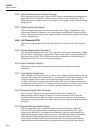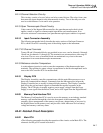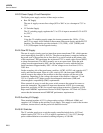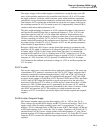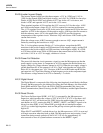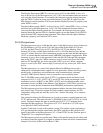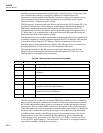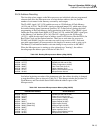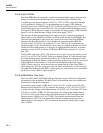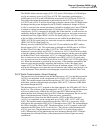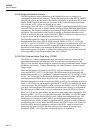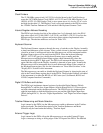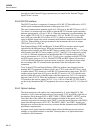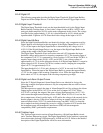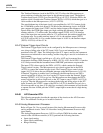
HYDRA
Service Manual
2A-14
2A-35. Flash EPROM
The Flash EPROM is an electrically erasable and programmable memory that provides
storage of instructions for the Microprocessor and measurement calibration data.
A switching power supply composed of A1U15, A1T3, A1CR21, and A1C66 through
A1C69 generates a nominal +12 volt programming power supply (VPP) when the
Microprocessor drives VPPEN high (A1U15-2). Resistor A1R35 pulls A1U15-2 to near
ground during power-up to ensure that A1U15 is not enabled while the Microprocessor
is being reset. When the power supply is not enabled, the output voltage (VPP) should be
about 0.1 volt less than the input voltage of the power supply (VCC).
The only time that the programming power supply is active is when new firmware is
being loaded or new calibration constants are being stored into the Flash EPROM. The
code executed immediately after power-up is stored in an area of the Flash EPROM
(known as the Boot Block) that is only eraseable and reprogrammable if BBVPP
(A1U14-30 and A1U16-30) is at a nominal +12 volts. This may be accomplished by
installing jumper A1W1, but this should only be done by a trained technican, and A1W1
should never be installed unless it is necessary to update the Boot firmware. In normal
operation, resistor A1R73 and diode A1CR20 pull BBVPP up to about 0.25 volts less
than VCC.
The FLASH* chip select (A1U1-128) for these devices goes low for any memory access
to A1U14 or A1U16. The FLASH* signal goes through jumper W3, which must always
be installed during normal instrument operation. W3 is removed only during the initial
programming of the Flash Memory during production at the factory. A1U14 is connected
to the high 8 bits of the data bus, so read accesses are enabled by the Read Upper
(RDU*) signal going low, and write accesses are enabled by the Write Upper (WRU*)
signal going low. A1U16 is connected to the low 8 bits of the data bus, so read accesses
are enabled by the Read Lower (RDL*) signal going low, and write accesses are enabled
by the Write Lower (WRL*) signal going low.
2A-36. NVRAM/Real-Time Clock
The Nonvolatile Static RAM (NVRAM) provides the storage of data and configuration
information for the instrument. The Real-Time Clock maintains time and calendar date
information for use by the instrument.
A nonvolatile power supply (VBB) biases A1U12, A1U20, A1U24, and A1U26. The
Microprocessor Supervisor (A1U10) monitors the voltage on VCC (A1U10-2). If VCC
is greater than the voltage of the lithium battery (A1U10-8), A1U10 switches VCC from
A1U10-2 to A1U10-1 (VBB). If VCC drops below the voltage of the lithium battery
(A1U10-8), A1U10 will switch voltage from lithium battery A1BT1 through current-
limiting resistor A1R98 to A1U10-1 (VBB). The nominal current required from the
lithium battery (A1BT1) at room temperature with the instrument powered down is
approximately 2 microamperes. This can be easily measured by checking the voltage
across A1R98.



